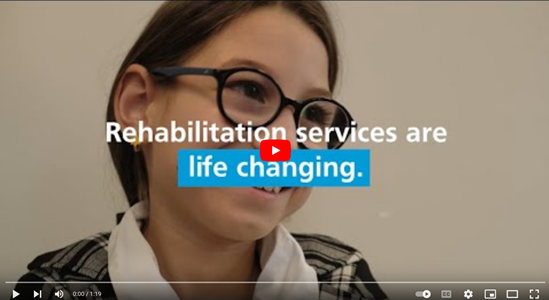Assistive technology
WHO defines assistive technology as the application of organized knowledge and skills related to assistive products, including systems and services. According to WHO’s definition, an assistive product is any external product, especially produced or generally available, the primary purpose of which is to maintain or improve an individual’s functioning and independence, and thereby promote their well-being.
Assistive products include devices, equipment, instruments or software from 6 functional domains: mobility, vision, hearing, communication, cognition and self-care. Examples of assistive products are physical products such as wheelchairs, spectacles and hearing aids, and digital products such as software and apps.
In the WHO European Region, the need for assistive technologies is predicted to increase in the coming years due to changes in the health and characteristics of the population. For example, the Region has an ageing population with people living longer, and an increase in noncommunicable diseases and disability. Over 15% of people living in the WHO European Region have a disability. Emergencies, including conflicts, disasters and outbreaks such as COVID-19, can all create surges in assistive technology needs.
The main barriers to accessing assistive technology include:
- complicated processes of applying for assistive technology
- limited knowledge and training of health-care professionals
- limited information available to users about assistive products
- limited funding for assistive technology.
Financial affordability and having to pay out of pocket to access and use assistive technology have also been identified as substantial barriers faced by many in need of assistive technologies.
The WHO Global Cooperation on Assistive Technology initiative, launched in July 2014, aims to improve access to high-quality and affordable assistive products globally. In May 2018 the Seventy-first World Health Assembly adopted a resolution urging Member States to develop, implement and strengthen policies and programmes to improve access to assistive technology, and the global report on effective access to assistive technology was published in 2022.
The WHO Regional Office for Europe has several activities aiming to support Member States in strengthening access to assistive technology:
- an initiative to support Member States in measuring access to assistive technology through national representative household surveys – launched in 2020;
- the WHO rapid Assistive Technology Assessment (rATA) questionnaire – an interviewer-administered questionnaire – used for data collection on access to assistive technology; and
- an assistive technology system analysis describing current service provision – currently being conducted in selected Member States.









